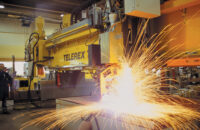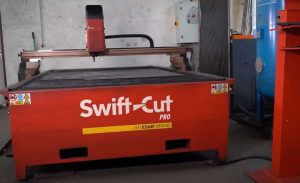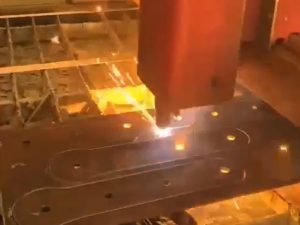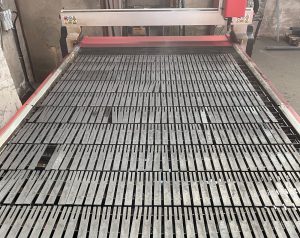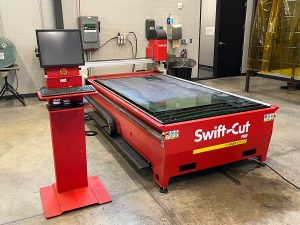What is Water Jet Cutting and how does it work?
It’s the ability to cut almost any material and thickness, precisely using a high-pressure jet of water. A stream of water is pushed through a tiny hole, known as an orifice or a jewel. This water stream is normally generated under pressures of 60,000 PSI (pounds per square inch) and to put that into some perspective, the water pressure from your average household tap is roughly 40 PSI.
What options are there?
Water jet cutting is split into two different types – abrasive and water only. An abrasive water jet is used to cut harder materials such as granite or metal; the water only used for foam, rubber, gaskets – it’s quick and easy to switch between non-abrasive and abrasive cutting. Making it an easy machine to operate and is suitable for most industries.
Why not plasma?
Not only does it cut a huge range of materials and thicknesses that plasma simply can’t, it is often a preferred method of cutting to use if the materials being cut cannot withstand the high temperatures of plasma or laser cutting.
What are the benefits?
The ability to cut material without impeding its fundamental structure is one of the most significant advantages of the water jet. Known as HAZ (heat affected zone) – reducing the effects of heat means designs can be created far more accurately without danger of interfering with the inherent properties of the design.
Add to that the vast array of materials it’s capable of cutting – some industries can complete their projects using only one machine as opposed to three so it costs less and takes up less space.
Can I see it in action?
We’d always suggest you see a table in action before making any decisions. Watching our Swift-Jet videos is a start, but we’d recommend you see the table live to really get a feel for the machine. Here at Swift-Cut we have regular demo days where we show off all the tables in our range and invite our customers to meet with our engineers.
Find out more about our Swift-Jet machine here.




